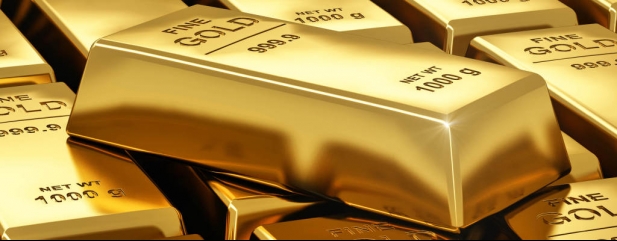Archived article
Please note that tax, investment, pension and ISA rules can change and the information and any views contained in this article may now be inaccurate.
Why gold could yet shrug off an unhappy anniversary

In August 1971, America’s 37th president, Richard M. Nixon, took the greenback off the gold standard, ‘closing the window’ though which overseas governments could exchange paper dollars for the precious metal at a fixed rate of $35 an ounce.
That manoeuvre, which signalled the end of the 36-year-old Bretton Woods monetary system, enabled Nixon and the US to pay for welfare programmes and ultimately fruitless military action in Vietnam.
Although economists and politicians hailed the policy as a liberation from a monetary straitjacket, investors can draw their own their own conclusions as to what markets ultimately thought of the launch of unfettered money creation by independent central banks.
The scores on the doors are clear: gold has gained 4,160% across the last five decades against the dollar. Put another way, the buck has lost 98% of its value relative to the precious metal while 85% of its purchasing power has gone for good measure, thanks to an inexorable rise in the consumer price index (or inflation, in other words).
And so, exactly 50 years after the demolition of Bretton Woods, here we are again: a US government that is running welfare programmes (and more besides, even allowing for the military withdrawal from Afghanistan) that it cannot afford and is running out of cash as it bumps up against the current Federal debt ceiling agreed by Congress of $28.4 trillion.
No wonder gold bugs are becoming more numerous.
FIFTY LONG YEARS
That said, even the most ardent supporters of the precious metal may have found it hard to celebrate the 50th (golden) anniversary of with too much vigour. Gold suffered some vicious selling earlier this month, for reasons which have yet to become entirely clear.
Talk of a possible peak in the US inflation rate could be one explanation. Others pointed to what they felt was a co-ordinated hit by hedge funds in the futures markets while a gathering consensus among economists that the US Federal Reserve may be about to start tapering its QE or quantitative easing programme could have also had an influence.
Whatever the reason, though, the plunge did not last long, and gold has quickly recovered its ground. But for it to break fresh ground and motor beyond $2,000 an ounce on a sustainable basis for the first time, one of three things may need to happen (or even a combination of them).
The first is that government debts keep rising and that QE is deployed to keep interest rates low and help fund them, as rising spending and rising deficits persuade investors look for stores of value to preserve their wealth. Gold is hard to find and costly to mine, so supply grows slowly, in contrast to the supply of money.
The opposite – the reining in or even the sterilisation of QE – could therefore hit sentiment toward gold. The former may happen, the latter simply looks impossible given the path taken in the last dozen years or so since the financial crisis and the Biden administration’s current spending plans, for example, but you never know.
The second is that inflation stays elevated or keeps rising. This would knock faith in the narrative that central banks have everything under control, challenge the authorities’ view that the current round of prices rises in ‘transitory’ and potentially force interest rate rises whether central bankers want them or not.
In theory, rising interest rates would be bad for gold, as improved returns on cash and higher bond yields would increase the cost of owning the metal (owing to foregone interest or yield). But that would depend upon what the real rate of interest is, adjusted for inflation and this is the third trend to watch.
If inflation rises faster than rates, further eroding the purchasing power of paper currency in the process, then the post-Nixon experience of the 1970s would suggest gold could shine in such an environment. A surge in real rates, as seen under Federal Reserve chair Paul Volcker, could see the case for gold melt away, as it did in the 1980s and 1990s, although whether the Federal Reserve has the stomach for this remains to be seen.
Important information:
These articles are provided by Shares magazine which is published by AJ Bell Media, a part of AJ Bell. Shares is not written by AJ Bell.
Shares is provided for your general information and use and is not a personal recommendation to invest. It is not intended to be relied upon by you in making or not making any investment decisions. The investments referred to in these articles will not be suitable for all investors. If in doubt please seek appropriate independent financial advice.
Investors acting on the information in these articles do so at their own risk and AJ Bell Media and its staff do not accept liability for losses suffered by investors as a result of their investment decisions.

 magazine
magazine








